When I did the obligatory unofficial Facebook poll of what to do in London, the two most recommended must-visits were Camden Market and the V&A. Camden Market will, alas, have to wait until a less grey and drizzly day. But as you know, I am always up for another museum, especially if it involves history or the fine arts. Or both, as the V&A does. It is a wonderful museum, and I heartily add my voice to the recommendations next time you are in London.
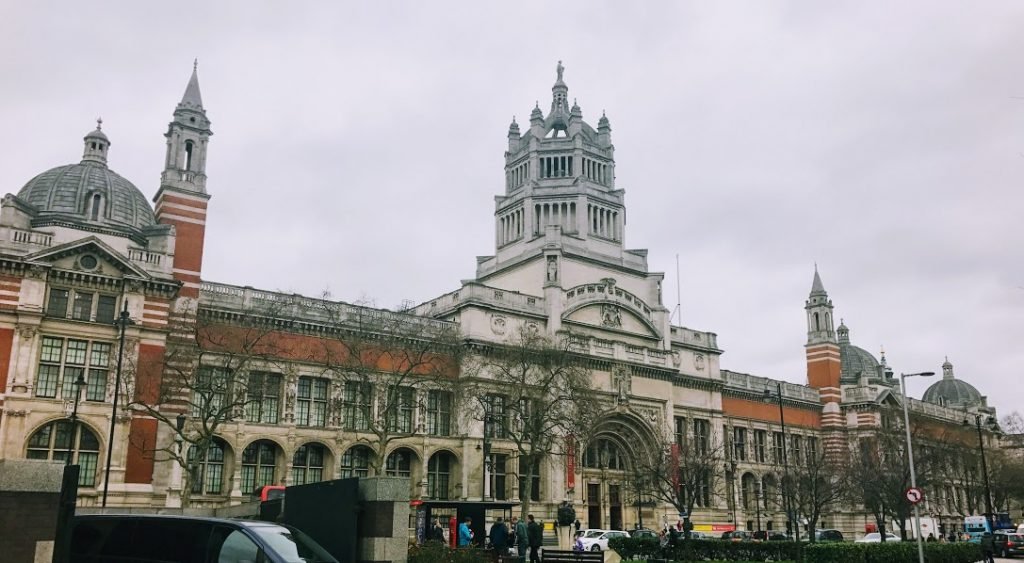
The 1899 ceremony in which the foundation stone of the museum’s current building was laid turned out to be Queen Victoria’s last public appearance, and it was then that it officially received its name, the Victoria & Albert Museum. It’s a perfect place to explore at random, which we did, although in the end I believe we saw almost the entire museum. The exhibit themes range from time periods (e.g. 1300-1600) to geographical areas (e.g. Korea or the Middle East) to artistic media (e.g. ceramics or glass).
If the British Museum is full of significant things, the V&A is full of beautiful ones. Like this giant 14th century missal full of heavily embellished old fashioned musical notation.

There are also a lot of quirky and interesting pieces, like this rather terrifying wooden tiger from India. It has an organ inside, and when the handle is turned it imitates the sound of the unfortunate European victim screaming.
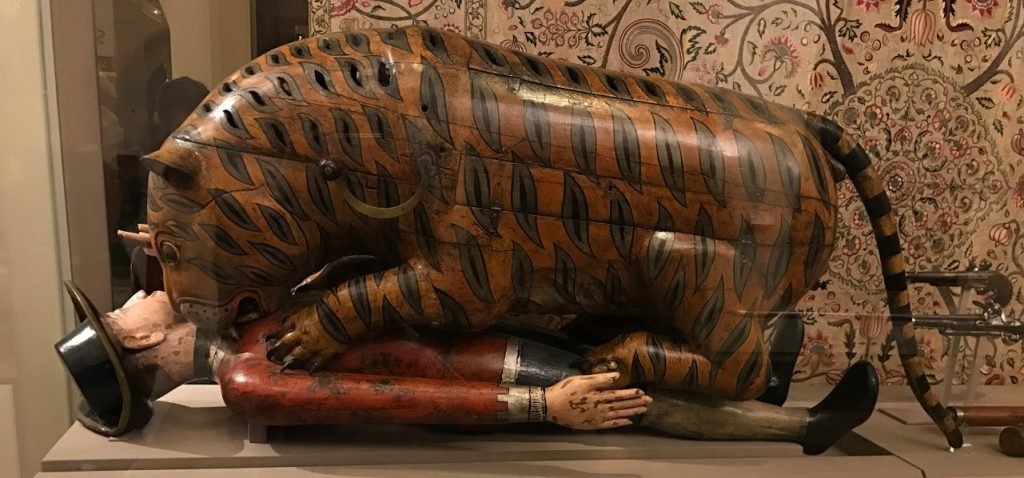
As well as a strange big gallery of plaster casts of famous works, the V&A has an enviable collection of real Rodin sculptures.
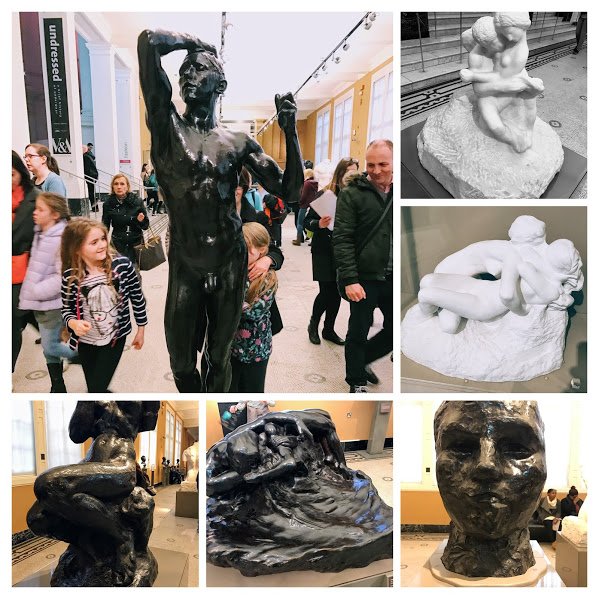
The museum obviously works fast to acquire objects of significance. A bare month after the event, I was tickled to find that this pussy hat was already on display:
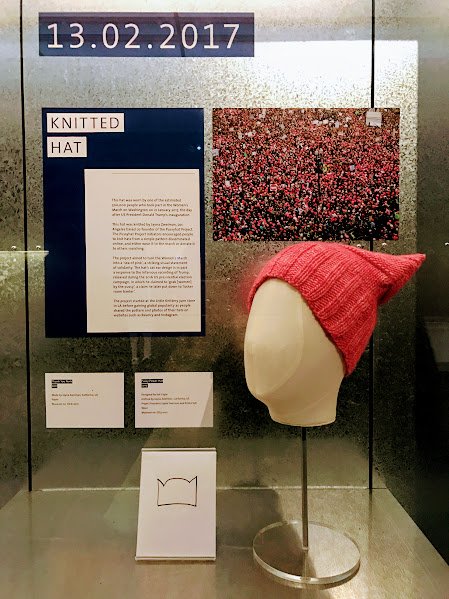
It was just outside a room full of 20th century furniture, incongruously displayed in a lovely old-fashioned library, where this delightful modern bookcase looked curiously at home.
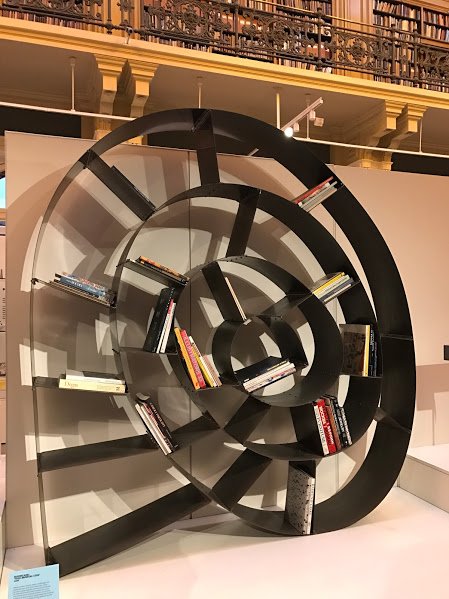
As did I.
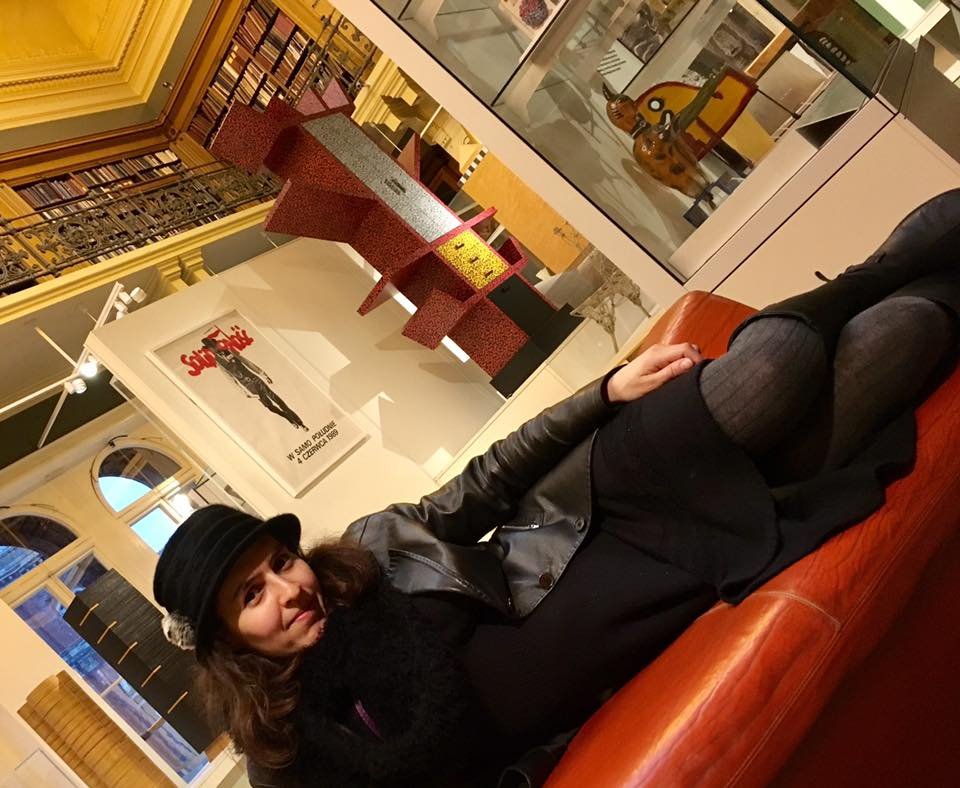
I was delighted during this museum visit to have not one but two partners in crime: Tony and Anwar, our London friend whom we met in Amsterdam, and who really went out of his way to help us feel at home (not only did he let us stay at his flat on Saturday evening, but he even joined my geeky London Trello Board to help me plan).
So as not to interrupt our museum-going, we lunched at the museum, in the gorgeous museum café, next to a wall of Delft blue tiles depicting classical philosophers, poets and artists.

I cannot remotely do justice to the breadth and beauty of the collection. For example, they had hundreds of fancy snuff boxes, of which I picked out several depicting beloved little dogs that looked rather like mine.
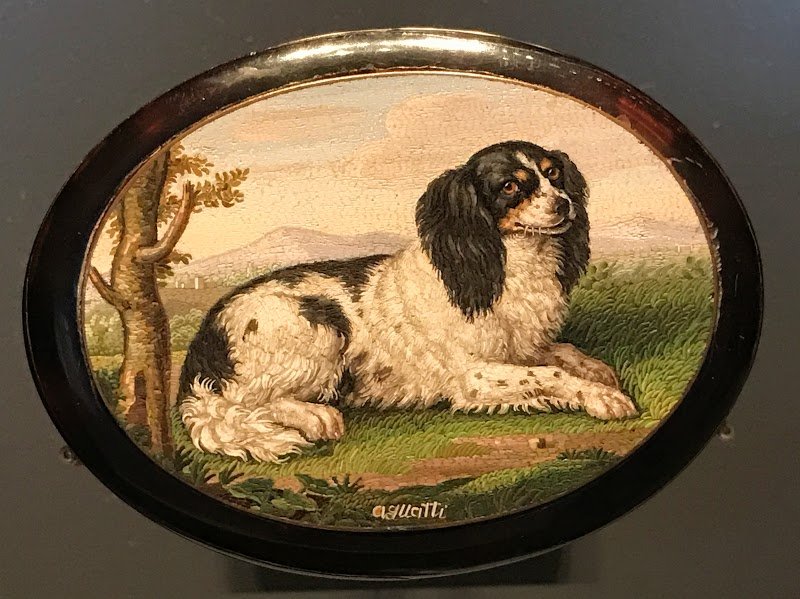
One of my favourite rooms was the one housing glass, which featured this purpose-built staircase.
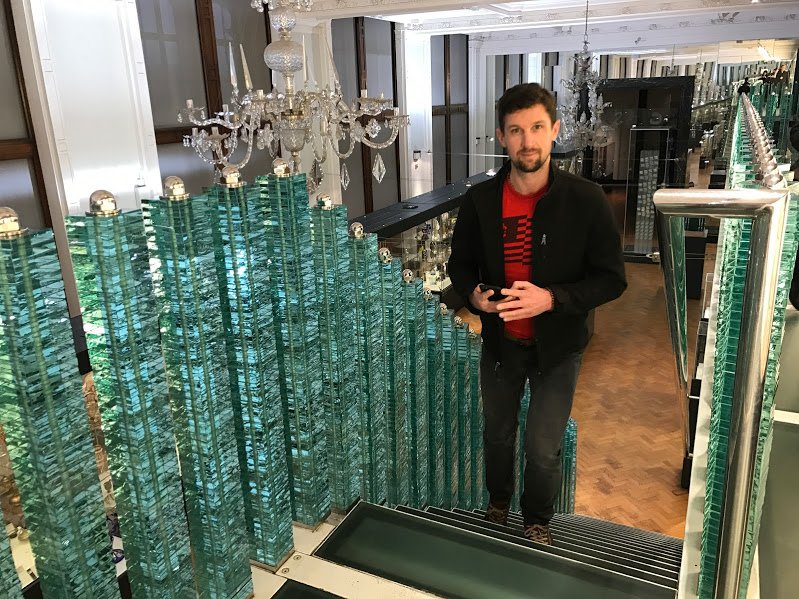
I think one of the best things about the V&A is that it’s arranged with such an eye to aesthetics. Modern pieces often appear right alongside older ones because they relate thematically or artistically, and everything is displayed to utmost best advantage. Definitely worth an hour (or six) of your time. And free! Like the other museums I visited in London.

After the museum we met friends, including Ally, another London friend we met in Amsterdam, in Chinatown for dumplings (we’d done Indian food the night before).

If I had to pick a favourite thing in London, it would probably have to be the British Museum or the V&A. But as far as non-museum activities, I was enchanted by our visit to an amazing cocktail bar, the Bar Américain at Brasserie Zédel. So enchanted, in fact, that we spent Friday evening there, and then went back on Saturday night and stayed till the place was closing up around us.
It really has to be seen to be believed, because it feels like something you would encounter in some half-forgotten novelist’s opulent alternative universe. First of all, the place is underground. So far underground that as you continue to descend staircase after staircase decorated with period posters like this, you feel as if you’re traveling backwards in time.
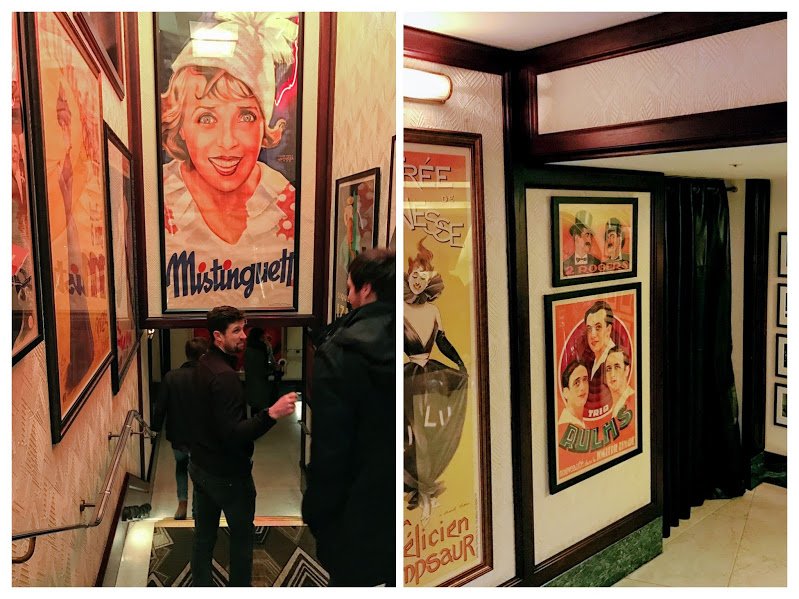
I was so glad we went back, because on Saturday night one of the hosts (the adorably nerdy one on the right) was happy to not only tell me the story of how the place came to be, but even give me a paper with the history of it.
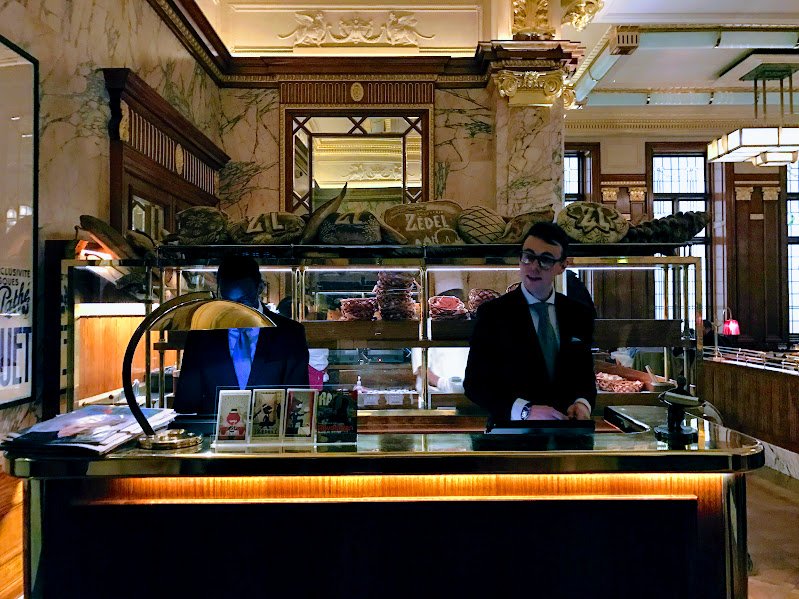
The Regent Palace Hotel opened in 1915, an ambitious and liberally funded project that resulted in the largest hotel in Europe at the time, with 1028 guestrooms. It was designed in the Beaux Arts style, and at the time it opened had eight different restaurants and bars, all situated deep underground to save real estate space.
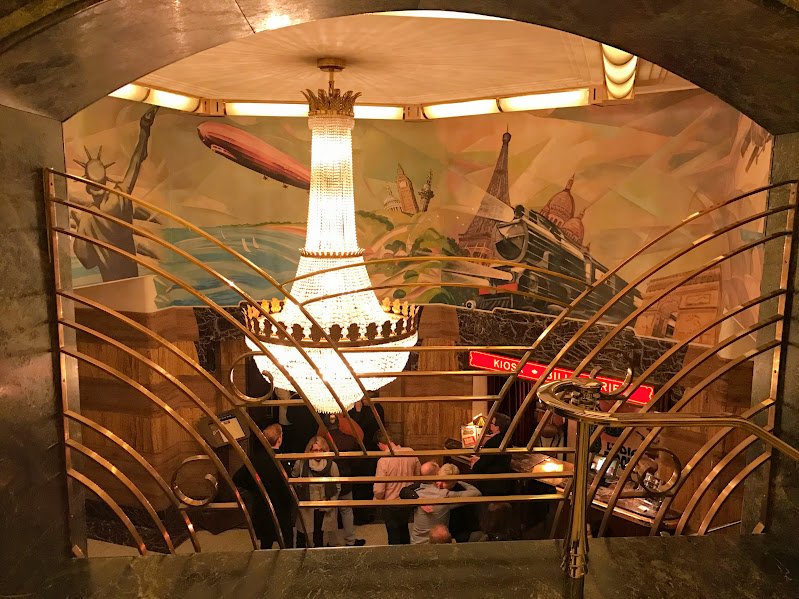
The interiors were redesigned in the 1930’s, and though the hotel later fell on hard times (and the actual hotel on top was redeveloped in 2006), three of the original downstairs areas have been restored to their original glory, which was described by Building magazine in 1935 as “just a trifle dissipated and naughty, but not sufficiently so to be vulgar.”
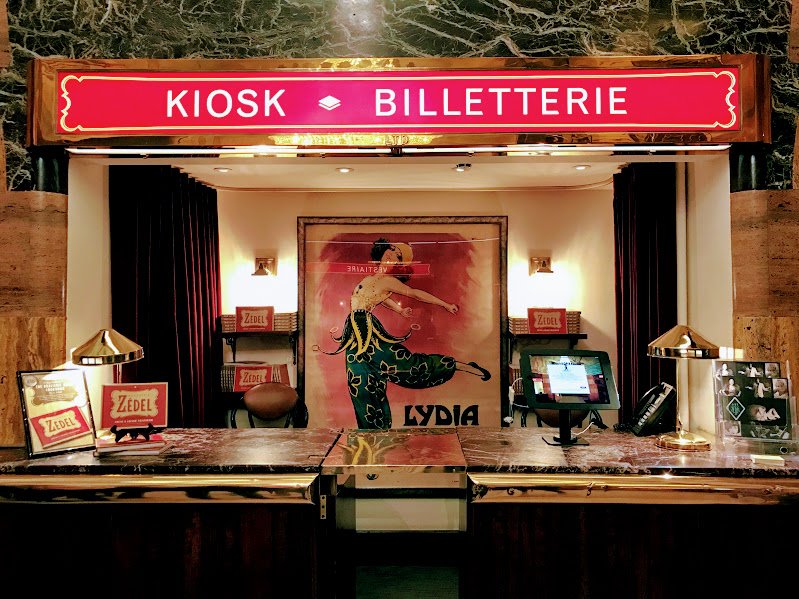
We had unfortunately already eaten both nights, so we didn’t have dinner at the actual Brasserie Zédel, although we did pop in for a photo. Both nights that we went, the restaurant was packed.

Instead, though, we had cocktails at the Bar Américain, which my brochure describes as “an extraordinary survival with its broad, horizontal stripes of stained birch veneers and jazz age columns.” I snapped this photo on the way out, after everyone else had gone.
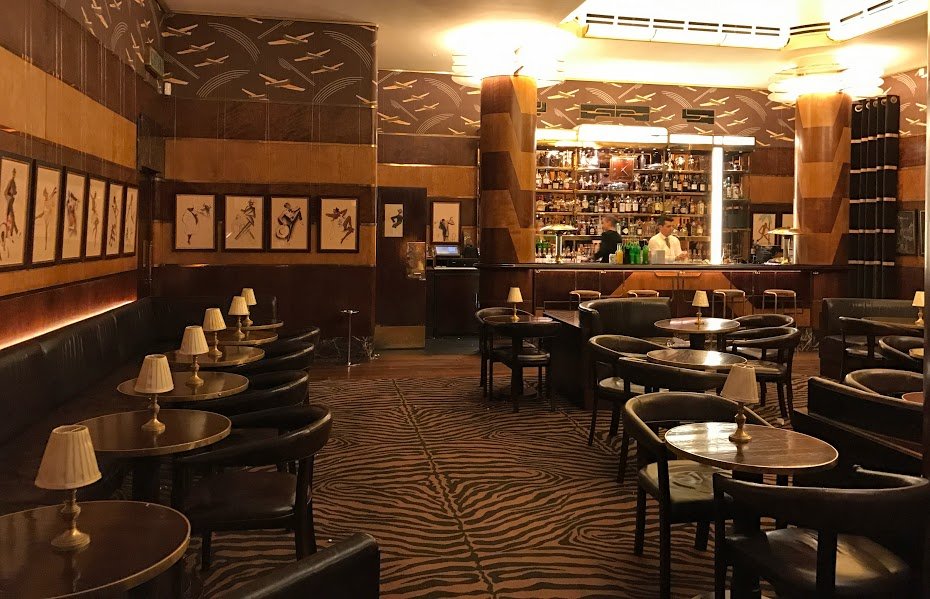
It was the perfect end to a perfect weekend: great atmosphere, great company, and really nice cocktails too. I’ll be more than happy to go back to London anytime.
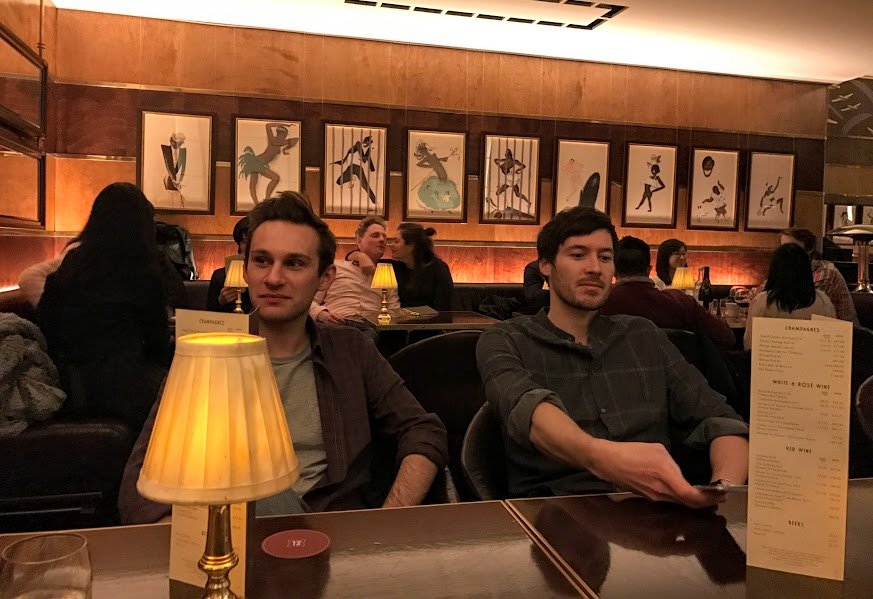
The Regent Palace Hotel didn’t close until 2006 and the building was redeveloped after that.
Thanks for the correction, Jo!